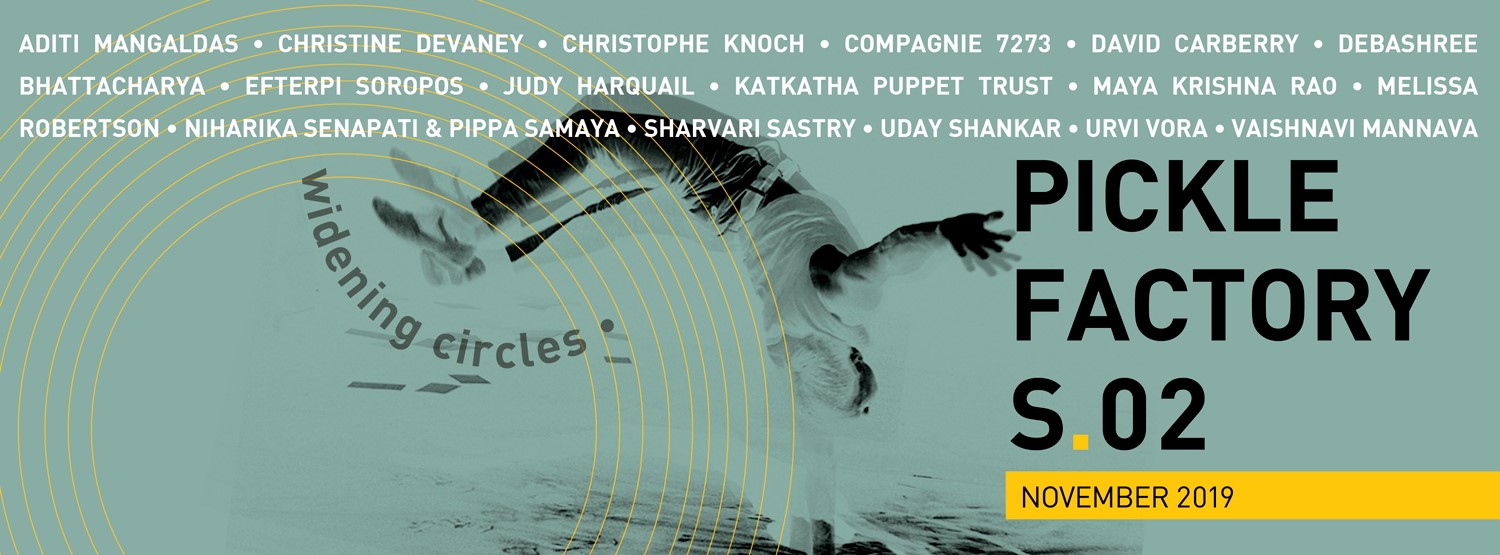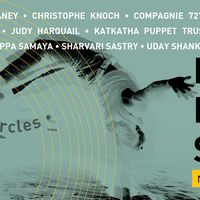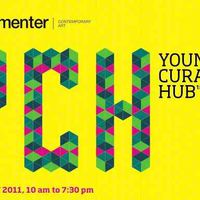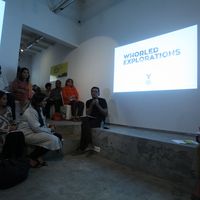Pickle Factory Dance Foundation | Interview

As part of the media partnership between culture360.ASEF.org and Pickle Factory Dance Foundation, we interviewed Vikram Iyengar, Director of Pickle Factory Dance Foundation, to tell us more about Widening Circles: Pickle Factory Season 2, which took place in November 2019.
Why Pickle Factory? Where did this idea come from?
Pickle Factory Dance Foundation is a hub for the practice, discourse and presentation of dance and movement work in Calcutta – a space to think, know, talk, imagine dance. The idea comes out of a felt need in the dance and movement community in India – the need for a home in a country that boasts innumerable movement expressions from dance to martial art.
We are currently nomadic, occupying different kinds of spaces across the city and transforming them into pop-up venues for the arts. In inhabiting these temporary venues, we infuse them with a new energy, bringing together atmospheric and inspiring spaces, imaginative art and artists, diverse audiences and communities, and exciting conversations and ideas. Through this we also etch new paths, experiences and socio-cultural capital into the fabric and landscape of the city.
Our aim is to create a permanent venue of this kind, a place where people come to share, exchange, relax, enjoy themselves, to challenge and be challenged back. A venue that is local, national and international in outlook, participation and reach, and part of an international network of vibrant and vital arts spaces. We envision this to be housed in a repurposed space in the architecturally textured fabric of Calcutta, transforming our experience of both architecture and movement.
This is the big dream.
The idea of a venue for dance and movement practice in India has been a long-standing one. The idea of setting it up in a repurposed space was actually suggested to me by the German choreographer Sasha Waltz in 2012, when she was showing me around the Radialsystem venue that houses her studio in Berlin. As a visitor to Calcutta, she felt that the city was home to many unused amazing buildings from industrial and colonial histories, and that repurposing them into arts spaces would be a very creative way of giving them a new lease of life.
The 2nd Season of Pickle Factory has just ended in Calcutta. Can you share some of the highlights in terms of programmes and collaborations?
Widening Circles: Pickle Factory Season 2 spanned 42 days from 1 November to 12 December 2019. It focused on the diversity within the world of dance and movement, featuring a range of artists and work at a range of venues and spaces engaging a range of audiences and communities.

FuittFuitt Multistyles, a workshop by Laurence Yadi Nicolas Cantillon – Compagnie 7273 at Sapphire Creations Dance Company (Photo Credits: Jennifer Kishan)
We hosted 52 artists and guests from India, Switzerland, Australia, Germany and Scotland, spanning backgrounds of classical and contemporary dance, physical theatre, multimedia performance, puppet-theatre, circus-theatre, performance criticism, and more. The Season had a packed programme of performances, workshops, artist interactions, discussion sessions and training, and we were proud to partner with 49 local, national and international partners to imagine and deliver it across 20 venues in Calcutta.
The partners are very varied – from performance companies to venues, from women’s groups to schools, from literature clubs to film institutes, from universities to corporate sponsors. This range was one of the highlights that we were able to achieve. Generally speaking, the diversity of engagements we offered was key – it pulled in different audiences and began to make dance and movement accessible to a whole new community.
This year the Season also included an exchange programme between Australia and India. Can you share more about this? What is the rationale behind choosing a specific country for this exchange?
The national focus this Season was Delhi with five artists from that city. The idea was to showcase the range of work happening in Delhi – a city that has transformed into a hub for all kinds of dance and performance practice.
Australia was our international focus. Our guests included David Carberry’s circus-theatre piece Underground from Brisbane; recipients of the first Australia-India Dance Exchange residency Niharika Senapati and Pippa Samaya from Melbourne; and our delegates – theatre and lighting designer Efterpi Soropos from Melbourne and arts administrator and facilitator Melissa Robertson from Cairns.

David Carberry and Alice Muntz in performance with 'Underground' at Satyajit Ray Film and Television Institute (Photo Credits: Dr. Golam Ashraf — in Kolkata)
The focus developed mainly through my personal engagement with Australia over the last couple of years – I was one of the Asia Pacific participants in the first international version of the Arts Leaders Programme offered by the Australia Council for the Arts in 2017-18. My several trips to Australia brought me into close proximity with various arts organisations and artists and began several conversations that seemed ripe for fruition.
Also, Australia has set up a new Consulate in Calcutta. Both the High Commission in Delhi and the Consulate in Calcutta were extremely eager to support an Australian cultural presence in the region. In addition, the conversations with Asialink in Melbourne culminated in the Australia-India Dance Exchange programme which we were able to schedule at the same time. We are committed to continuing the relationship with Australian art and artists into the future.
In Season 2 you were looking at “Widening Circles” in terms of audiences but also in terms of unconventional spaces and venues across the city. Are you happy with the results?
Curatorially in Season 2, we asked ourselves three questions: what can dance and movement work entail, where can it be performed / presented, and who can it involve or engage? All three questions were to do with breaking open the closed circles within which dance work tends to exist, and actively making it accessible and enjoyable for more and more audiences and communities.
The programming of the Season therefore included a performance festival, an audience facilitation workshop, a discussion series around repurposing spaces, various formats of artist interactions, and a range of outreach initiatives working with different partners from various backgrounds. The idea was to overlap our circles of operation and reach as far as possible, to cross-pollinate both experiences and audiences.
The focus on spaces began with Season 1 and has continued with all our work. This Season, we presented work in a plush auditorium, burnt out cinemas, terrace spaces, converted Blackbox spaces, and television studios. Many of the unconventional spaces hosted live performances for the first time, making it a technical challenge for both artists and production teams. But the creative energy and excitement in imagining and transforming these spaces into performance spaces added to the delighted response from the audiences made it all worthwhile.
Our week of focused discussions around repurposing spaces for the arts was led by Christophe Knoch (Berlin) and Sharvari Sastry (Mumbai). The location for each discussion was carefully chosen – a hotel converted into a venue for original music, the Kolkata Port Trust area with a host of crumbling warehouses on the riverfront, a black box in a converted flat, and a beautiful bookstore in a ground floor apartment.

Christophe Knoch (Berlin), Sharvari Sastry (Mumbai) and a group of art and culture enthusiasts explored the Kolkata Port Area scouting for spaces to repurpose and turn into pop-up venues for the arts. (Photo Credits: Pickle Factory Dance Foundation)
Of course, some spaces worked better than others – it is always a learning experience. But the range of spaces we offered as performance and workshop venues added to the focused discussions around repurposing spaces has begun conversations around the idea of what a performance venue can be, especially in the context of Calcutta. This is a conversation we are committed to taking forward in 2020.
How has the festival evolved and matured since its 1st edition?
Pickle Factory Season 1 was held in February-March 2018. Between the two Seasons, Pickle Factory has regularly presented smaller programmes with Indian and international artists. It took us about a year to imagine and plan Season 2, which was at least three times bigger than Season 1!
Season 2 also had a far greater range of practice, and many more partners on the journey. It was heartening to see a rise in the number of local and national supporters, especially in terms of financial resources for Season 2. We did succeed in reaching out to fresh audiences both because of our peripatetic nature (we only had one festival venue in Season 1), and because of the very different kinds of work we had programmed.
A small but enthusiastic group of young people – performers and others – have been affected and have come forward to offer their support and involvement for the future. We also now have a small but dedicated permanent team rather than a projects team. All these factors mark a coming of age for the Pickle Factory.
Where do you see Pickle Factory in 5 years from now?
Sustainability across all fronts is what we are working to achieve over the next few years – finances, personnel, programmes, partnerships. 5 years from now, we hope to have a permanent space for the Pickle Factory. We aim to have built an interested and invested community in Calcutta, along with strong partnerships in the east and north-east regions of the country. And we would have begun to be an internationally connected hub for dance and movement practice, discourse and development – a home for artists and audiences of all kinds to meet, exchange, challenge and inspire each other, in a safe, supportive environment.
The Pickle Factory is a hub for the practice, discourse and presentation of dance and movement-based work in India. We are inspired by and will constantly revisit the question of what it means to create, share and reflect on such work in a shifting and uniquely Indian context, while being closely connected to an international network of similar endeavours. We will actively work with, for and through performers, audiences and support systems towards a vibrant, invested, and critical culture and community.
Similar content
from - to
01 Nov 2019 - 30 Nov 2019
posted on
15 Aug 2019
from - to
15 Jul 2011 - 16 Jul 2011
from - to
22 Aug 2017 - 29 Aug 2017






